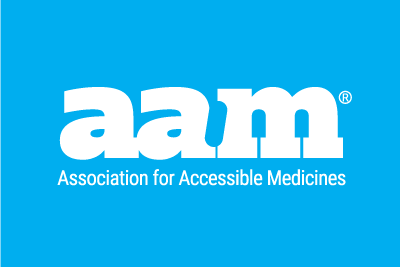AAM appreciates FDA’s efforts to address drug shortages, and we look forward to working with the Agency to further refine potential options as the agency moves forward with the important work on drug shortages.
Ensuring patient access to needed drug products involves several stakeholders throughout the key stages of a product’s process – starting with the development of the product; the authorized approval; manufacturing and release; contracting and distribution; dispensing; and the reimbursement of the products. Therefore, each stakeholder within this complex network has the ability; and in fact, the responsibility to prevent and/or remediate a drug shortage.
With this said, I offer a few recommendations that could potentially aid in alleviating this public health issue.
First, related to the manufacturing and regulatory processes – the FDA is the direct influencer:
- Transparency and Communication – It is critical for FDA to further enhance and improve transparency and timely communication. Especially the status of applications and inspections to allow generic manufacturers to properly project and plan for manufacturing schedules of drugs in shortage.
- FDA should also further enhance and improve the existing expedited resolution pathway for drugs in shortage.
- New and updated Guidances – FDA should continue to carefully consider the impact of revising existing draft and final guidances has on timely access, especially when changes involve products that are susceptible to a shortage. AAM believes FDA should permit generic sponsors to comply with new or updated standards as a post-market commitment to mitigate delays in access. As we all know, the approval standards for generic medicines are often an evolving process. Such standards may change throughout the lifecycle of a product. But revisions made, especially during the review process, adds uncertainty and significant additional time to the overall approval of a product. Therefore, FDA should have the flexibility to use available regulatory discretions to assess public health impact. For examples, when FDA publishes a new or updated guidance or otherwise imposes a new requirement after an ANDA is received, including compendial, labeling, and bioequivalence or other testing requirements, the agency should allow the sponsor to comply with the changes as a post-market commitment. This said, the exception being if the changes address an imminent safety or efficacy concern. This approach could potentially help to alleviate shortages by expediting the approval of needed generic medicines and providing the predictability that is necessary to support a timely market entry.
- New cGMP requirements and or enhancements to cGMP requirements should be provided via guidance rather than via 483s or warning letters. This approach will provide clarity and timely notification of the changes to allow sponsors to comply with the new inspectional expectations and protocols.
- CDER should meet with a sponsor of a drug shortage product upon request, after the sponsor submits its 483 response. This approach will allow for effective and timely remediation of the identified 483 issues. A re-inspection of an OAI facility should be conducted within 90 days of the sponsors request.
Second, is related to interagency forces – the FDA has the strong potential to influence change
- Encourage immediate investment in manufacturing for generic medicines most vulnerable to shortages – HHS and the FDA should consider instituting a program that would provide targeted federal grants or contracts, or other direct assistance, designed to aid manufacturers in addressing manufacturing challenges, including capacity challenges. Such grants could provide additional funds for manufacturers to:
1) upgrade and update existing manufacturing lines; 2) build new lines in existing facilities; or 3) build new facilities to provide for excess or idle capacity to be used when shortages occur. These grants could be modeled after a similar concept which was included in the 21st Century Cures legislation for grants to manufacturers to study continuous manufacturing. - Contingency Planning – HHS and FDA should develop a supply contingency plan for which the government establishes reserve capacity for essential drug products that are most vulnerable to shortages. This contingency plan could be modeled after the Strategic National Stockpile program. The plan should also include options to (1) reduce the regulatory burden so that manufacturers can expeditiously bring product back to market and (2) review the role and potential impact of the shelf life extension programs for products in critical supply or in drug shortage.
Third, is related to market forces – the FDA has the potential to influence change
- Better understand the role of purchasers – Understanding drug supply chain purchaser consolidation (wholesaler-retail consortiums and GPOs) is a necessary step toward addressing the problem of shortages. FDA, in consultation with other government entities, should consider the potential impact the consolidation of purchasers and other supply chain organizations has on shortages and the creation of harmful market conditions. Further these authorities should perform an analysis to assess the economic harms, if any, that have resulted from such consolidations.
In conclusion – AAM looks forward to continuing to work collaboratively with FDA to ensure patients access and benefit from safe, effective, and low-cost FDA-approved generic and biosimilar medicines. AAM stands ready to work with the Drug Shortage Task Force to ensure that drug shortages are prevented and/or resolved at the earliest possible date. As stated earlier, ensuring patient access to needed drug products involves several stakeholders throughout the key stages of a product’s process – starting with the development of the product; the authorized approval; manufacturing and release; contracting and distribution; dispensing; and the reimbursement of the products. Therefore, each stakeholder within this complex network has the ability; and in fact, the responsibility to prevent and/or remediate a drug shortage.
These remarks were presented at the public meeting “Identifying the Root Causes of Drug Shortages and Finding Enduring Solutions” hosted by the FDA under a cooperative agreement with the Robert J. Margolis, MD, Center for Health Policy at Duke University, held on November 27, 2018 in Washington, D.C.
By David Gaugh, AAM's Senior Vice President, Sciences & Regulatory Affairs




